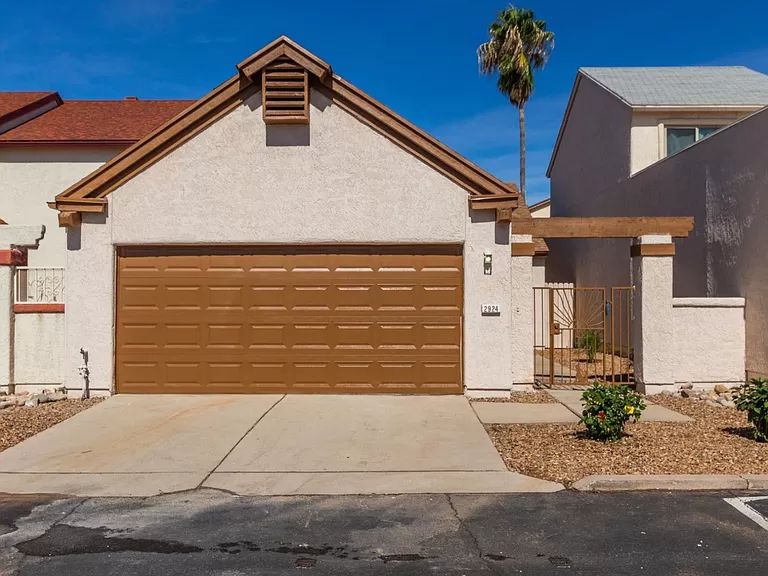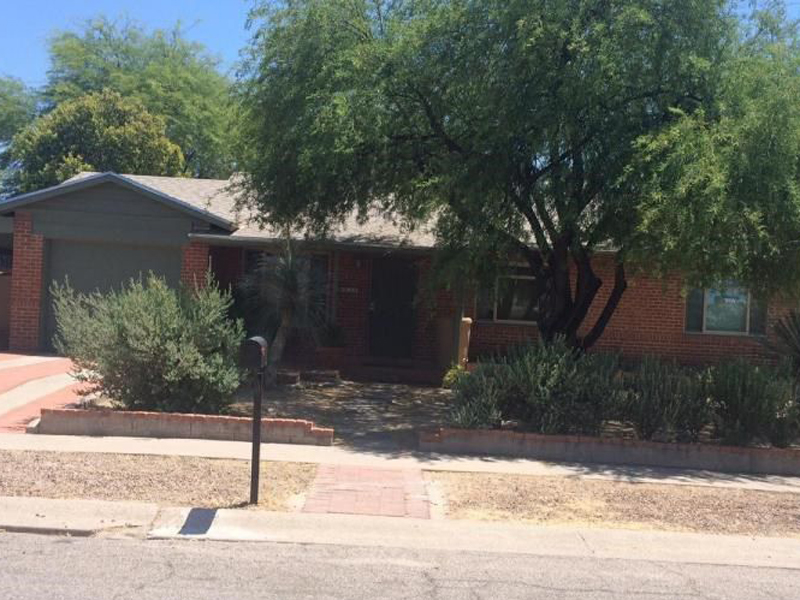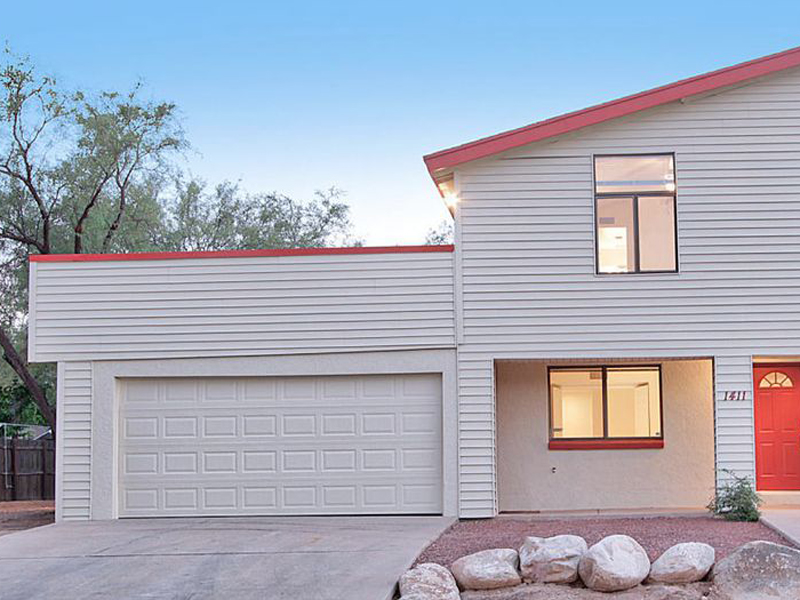Is Your Garage Door Stuck? Here's What to Do Initial
When your garage door will not open, start with these essential safety and security checks prior to attempting any kind of repair work. Initially, make certain nobody is standing near the door and that vehicles are free from the opening. Seek evident signs of damages like damaged panels, bent tracks, or hanging cable televisions. If you see a snapped spring or seriously damaged parts, stop quickly and call an expert—-- these repairs call for specific tools and proficiency to deal with safely.

Check These 6 Things Before Calling an Expert
Prior to thinking you require pricey repair work, run through this quick diagnostic list that resolves most garage door troubles:
-
Source of power: Confirm the opener is plugged in and the electrical outlet is functioning
-
Remote batteries: Replace dead batteries in your push-button control
-
Hands-on lock: Inspect if someone mistakenly engaged the manual lock
-
Obstructions: Seek particles obstructing the door's course or sensors
-
Emergency situation release: Make certain the red emergency situation cord hasn't been drawn
-
Breaker: Confirm the garage circuit hasn't tripped
These straightforward checks settle around 70% of garage door concerns without needing professional intervention.
10 Common Factors Your Garage Door Will Not Open
Understanding why your garage door opener isn't working assists you choose the ideal option. Here are one of the most constant reasons house owners encounter:
Dead remote batteries represent the easiest solution—-- when batteries pass away, the remote can't send out signals to the opener. Power blackouts or stumbled breakers reduced electricity to the motor. Damaged springs stop the door from lifting properly and require prompt professional interest. Sensing unit imbalance causes security systems to obstruct door operation. Track blockages quit rollers from relocating efficiently. Motor overload triggers automated shutoffs when the opener discovers resistance. Limitation button troubles perplex the opener concerning door placement. Cable damages interrupts the training device. Weather-related concerns influence door activity during extreme temperatures. Element wear from age progressively reduces system efficiency.
Problem # 1: Dead Push-button Control Batteries
When your wall switch works but your remote doesn't, dead batteries are normally the culprit. Many garage door remotes utilize either 3-volt lithium or 12-volt alkaline batteries. Get rid of the back cover of your remote and inspect the battery kind. Change with fresh batteries and evaluate the remote. If it still does not function, you may require to reprogram it to your opener. Consult your opener's handbook for specific reprogramming guidelines, as the procedure differs by maker.
Problem # 2: Power Supply Issues
Garage door power troubles frequently stem from loosened connections or tripped circuits. Inspect that the opener is strongly plugged into its outlet—-- resonance can loosen up links over time. Evaluate the outlet with one more tool to verify it's functioning. Examine your home's breaker box for tripped circuits, specifically if you have actually experienced tornados or power changes. GFCI electrical outlets might have tripped and need resetting. If the opener has power however will not react, the problem likely lies elsewhere in the system.
Trouble # 3: Broken or Damaged Springs
Busted garage door springs are among one of the most dangerous elements to deal with. If you hear a loud bang from your garage or see the door feels incredibly heavy when attempting to raise manually, a spring has actually likely broken. Torsion springs run flat above the door, while extension springs sit on either side. Never ever attempt spring repair work on your own—-- these parts keep incredible tension that can create serious injury or fatality. Expert substitute normally sets you back $150-$300 however ensures your safety and security.
Problem # 4: Obstructed Security Sensing Units
Modern garage doors feature safety and security sensing units that avoid closure when items are discovered. These sensors can stop the door from opening if they're unclean, misaligned, or obstructed by particles. Clean sensing unit lenses with a soft towel and ensure nothing obstructs the unseen beam of light between them. Inspect that sensing units are correctly straightened—-- a lot of have indicator lights that show connection condition. Sensor problems commonly fix with straightforward cleaning and adjustment.
Issue # 5: Track Obstructions or Damages
Garage door tracks guide rollers as the door moves up and down. Dirt, particles, old oil, or tiny things can jam the system. Evaluate tracks aesthetically and get rid of any kind of obstructions with a brush or cloth. Search for dents, flexes, or bending that might hinder smooth procedure. Minor track changes are feasible for handy homeowners, but significant damage calls for specialist repair to avoid additional troubles or safety and security risks.
Issue # 6: Garage Door Opener Electric Motor Issues
When the garage door motor runs yet the door does not move, several issues could be responsible. The electric motor might be overloaded and shutting down as a precaution. Gear wear, especially in older systems, can prevent correct operation. Chain or belt drive problems affect power transmission. If you listen to unusual grinding, clicking, or humming sounds, quit using the opener instantly. Motor fixings often set you back more than substitute, especially for systems over 10 years old.
Detailed DIY Troubleshooting Overview
Follow this methodical approach to garage door troubleshooting while focusing on safety throughout the procedure:
Action 1: Check the wall surface button initially. If it works but the remote does not, focus on remote issues. If neither works, inspect power supply.
Action 2: Check out the hands-on release cord. If it's been drawn, the opener is disengaged from the door. Push the trolley back to reconnect.
Step 3: Manually check the door by disengaging the opener and trying to lift the door by hand. It should move efficiently and remain in area when half-open.
Step 4: Check visible parts for damages, paying unique interest to springtimes, cords, and tracks.
Step 5: Check all safety features consisting of sensing units, limit switches, and auto-reverse features.
Action 6: Test different controls (remote, wall surface switch, keypad) to isolate the problem resource.
Constantly use safety glasses and job gloves when carrying out evaluations, and never ever effort fixings on springtimes or high-tension elements.
When to Call a Specialist vs. DIY Solutions

Recognizing when to call a garage door specialist versus trying DIY fixings protects both your safety and security and your budget. Deal with these problems on your own: dead remote batteries, power supply problems, small track cleaning, sensing unit cleaning and placement, and fundamental lubrication.
Never attempt these repair work yourself: spring replacement or adjustment, cable repairs, major track adjustment, electric wiring problems, opener motor substitute, or any repair work involving quick fixes for garage door not closing properly high-tension components. Expert professionals have actually specialized tools, training, and insurance policy to deal with dangerous repairs securely.
Think about fixing prices versus substitute expenses, specifically for doors over 15 years of ages. Modern garage doors offer far better security functions, power performance, and reliability than older models.
Emergency Garage Door Solutions
When you're stuck to a garage door that won't open up and need prompt gain access to, adhere to these emergency situation treatments:
Guidebook Procedure: Pull the red emergency situation launch cable to disengage the opener. This permits hand-operated operation however needs correct method to prevent injury. Raise the door slowly and evenly, using leg muscular tissues instead of your back. The majority of domestic doors evaluate 100-150 extra pounds, making them manageable for many adults.
Momentary Repairs: If the door opens up manually however will not stay up, prop it open with sawhorses or clamps—-- never ever utilize your body or vehicles as supports. For doors that won't shut entirely, make sure the opening is protected if you must leave.
Emergency situation Service: Many garage door firms use 24/7 emergency solution for scenarios involving safety and security issues, trapped automobiles, or complete system failures. While extra costly than routine solution phone calls, emergency situation repair work offer instant solutions when needed most.
Safety Caution: What NOT to Do
Garage door safety and security needs comprehending hazardous repair services that ought to never be attempted by house owners:
Never ever try to repair springs—-- they store enough power to create fatal injuries when they break or are incorrectly managed. Don't require a stuck door—-- this can harm the opener, tracks, or door panels, creating much more costly problems. Stay clear of bypassing security functions—-- sensors and auto-reverse systems prevent severe injuries and property damage.
Don't neglect strange sounds—-- grinding, scraping, or banging noises indicate problems that intensify in time. Never utilize the door if cords are frayed or broken—-- the door could drop all of a sudden. Do not try electrical repairs unless you're a certified electrical expert—-- garage door openers make use of both 120V family existing and low-voltage control circuits.

Preventative Upkeep to Avoid Future Issues
Normal garage door upkeep avoids most typical problems and extends system life expectancy considerably:
Month-to-month Tasks: Visual examination of all components, checking auto-reverse safety and security features, inspecting and tightening up hardware, and cleansing tracks and sensors.
Quarterly Tasks: Lubing all relocating parts with suitable garage door lube, testing handbook procedure, and checking weather condition sealing.
Yearly Tasks: Expert inspection and tune-up, spring change if needed, and opener upkeep consisting of belt or chain adjustment.
Seasonal Tasks: Preparing for weather condition extremes, examining insulation, and readjusting opener settings for temperature level adjustments.
Constant upkeep expenses much less than emergency repair work and guarantees dependable operation year-round.
Garage Door Won't Open FAQs
Why won't my garage door open with the remote but works with the wall switch?
This normally shows dead remote batteries, signal disturbance, or the requirement to reprogram the remote. Examine batteries first, after that consult your opener guidebook for reprogramming instructions.
Can I manually open my garage door if the power is out?
Yes, draw the red emergency situation release cord to disengage the opener, then raise the door by hand. Be gotten ready for the door's full weight and lift with correct technique to avoid injury.
Exactly how do I know if my garage door springtime is damaged?
Indicators include a loud bang from the garage, the door feeling extremely heavy when raising manually, noticeable gaps in the spring coils, or the door just opening a few inches prior to stopping.
Is it secure to use my garage door if it will not open up completely?
No, partial procedure shows mechanical troubles that could aggravate suddenly. Quit utilizing the door and have it checked by an expert to avoid further damages or injury.
What should I do if my garage door opens however will not shut?
Check security sensors for obstructions or imbalance, check out the tracks for debris, and evaluate the auto-reverse function. If these do not address the problem, speak with an expert.
How much does it cost to repair a garage door that won't open up?
Prices vary widely depending upon the problem: battery substitute ($5-$10), expert medical diagnosis ($50-$100), spring replacement ($150-$300), or opener replacement ($200-$500).
Can weather impact my garage door's capacity to open?
Yes, severe cold can thicken lubes and impact steel parts, while warm can create expansion issues. The majority of troubles solve as temperature levels stabilize, but relentless problems might require professional attention.
Why does my garage door open up a couple of inches then quit?
This normally indicates damaged springtimes, restriction switch issues, or track obstructions. The opener's security attributes quit operation when resistance is spotted, avoiding damages to the electric motor or door.
Obtain Professional Aid for Facility Issues
When DIY troubleshooting does not resolve your garage door problems, specialist specialists give the experience and tools needed for safe, long lasting repairs. Qualified experts detect problems accurately, make use of manufacturer-approved parts, and offer warranties on their job.
Professional services consist of: extensive system evaluations, spring and cord replacement, opener repair and replacement, track positioning and replacement, electric troubleshooting, and emergency situation service calls.
What to expect: upfront rates, qualified and insured service technicians, same-day solution for lots of repairs, and follow-up maintenance recommendations.
The majority of garage door companies offer complimentary quotes for major repair services and can offer instant remedies for urgent troubles impacting home safety and security or vehicle access.
Obtaining Your Garage Door Working Again
A garage door that will not open doesn't have to ruin your day or damage your budget. Start with simple troubleshooting actions like examining power, replacing batteries, and taking a look at for apparent obstructions. Numerous issues have fast DIY services that bring back normal operation within minutes.
Nevertheless, identify when professional help is necessary—-- particularly for spring-related issues, electric problems, or facility mechanical failures. Trying hazardous fixings yourself takes the chance of severe injury and usually develops extra expensive problems.
Normal upkeep prevents most garage door concerns and guarantees trusted operation for many years to find. When problems do occur, address them immediately to prevent more pricey fixings and preserve your home's protection and comfort. Whether you require a basic battery replacement or total system overhaul, remedies exist to get your garage door working smoothly once more.